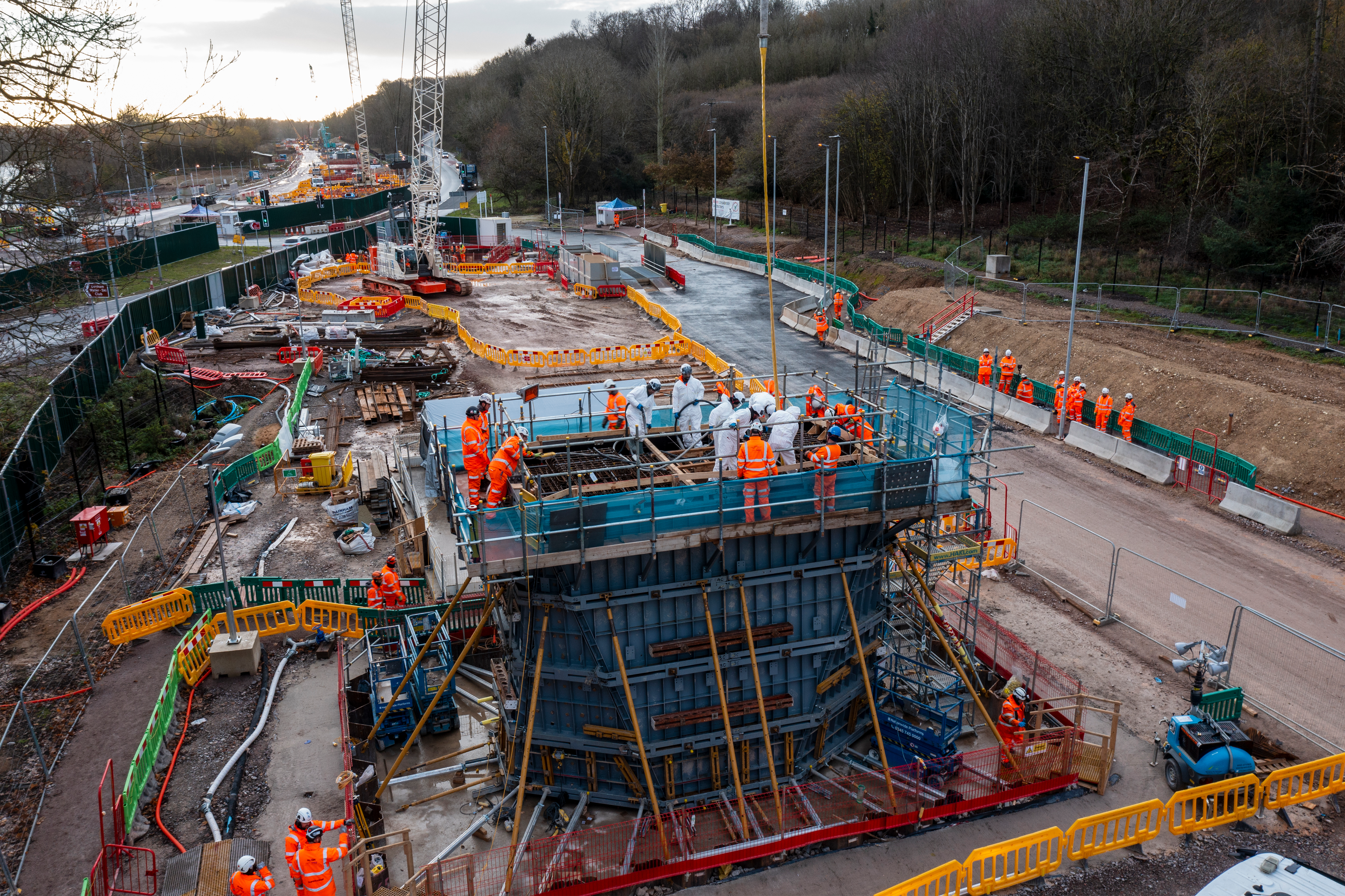The UK’s longest rail bridge takes form, as the first 56 giant piers are raised for HS2
Reaching afar for 3.4km, the Colne Valley Viaduct, will be responsible for carrying high speed trains, traveling at speeds of up to 200mph between the outskirts of Hillingdon and along the M25, to Birmingham and beyond.
The 56 concrete piers that have so far been completed serve as the supporting stumps for this bridge, with many more yet to be added to this total figure, which will elevate the Viaduct as it soars above a series a lakes along the outskirts of London.
The first of these piers, weighed in at a whopping 370 tonnes, and 6m tall was cast on site by a team of engineers whom in fact, managed to utilize a specially-designed formwork, in order to create the shape of the structure. Only then to be removed during following 4 days to reveal the final form.
Each pier is designed accordingly to ensure the full weight of the deck above if properly supported, and each rest’s upon a set of concrete piles, which go 55m deep into the ground, for additional reinforcement. A total of 292 piles and 56 pile caps will be processed into the full length of the viaduct.
Contractor’s Align JV – a team made up of Bouygues Travaux Publics, Sir Robert McAlpine, and VolkerFitzpatrick – and working in partnership with Kilnbridge, were those responsible for making this first difficult movement happen.
HS2 Ltd’s Project Client, David Emms, said: “The Colne Valley Viaduct will be one of HS2’s most iconic structures and it’s great to see how much has been achieved already. I’d like to thank the whole team for the huge amount of work they’ve done to get us to this point.”
The architecture of the Colne Valley Viaduct, was actually inspired by the flight of a stone skipping atop the water, incorporating a series of elegant spans, stretching out as far as 80m in length. Across the River Colne and Grand Union Canal the railway will carry just 10m above the surface of these lakes, creating a sleek effect at it skims long these bodies of water, before preparing to elevate and jump once more.
In line with climate woe, carbon has been cut from the projects construction where possible, using clever design tricks, resulting in a loss of carbon of one third. And over the last six years, HS2 has worked alongside both the Environment Agency, and Affinity Water to monitor the water quality and agree upon the best of working methods, all in order to protect the natural environment.
HS2 is still a long way away from opening day, with the projected end dates ranging from 2029 and 2033, and is well underway in the here and now.
But a big rail project of this calibre is exciting nonetheless.
Image credit: HS2











